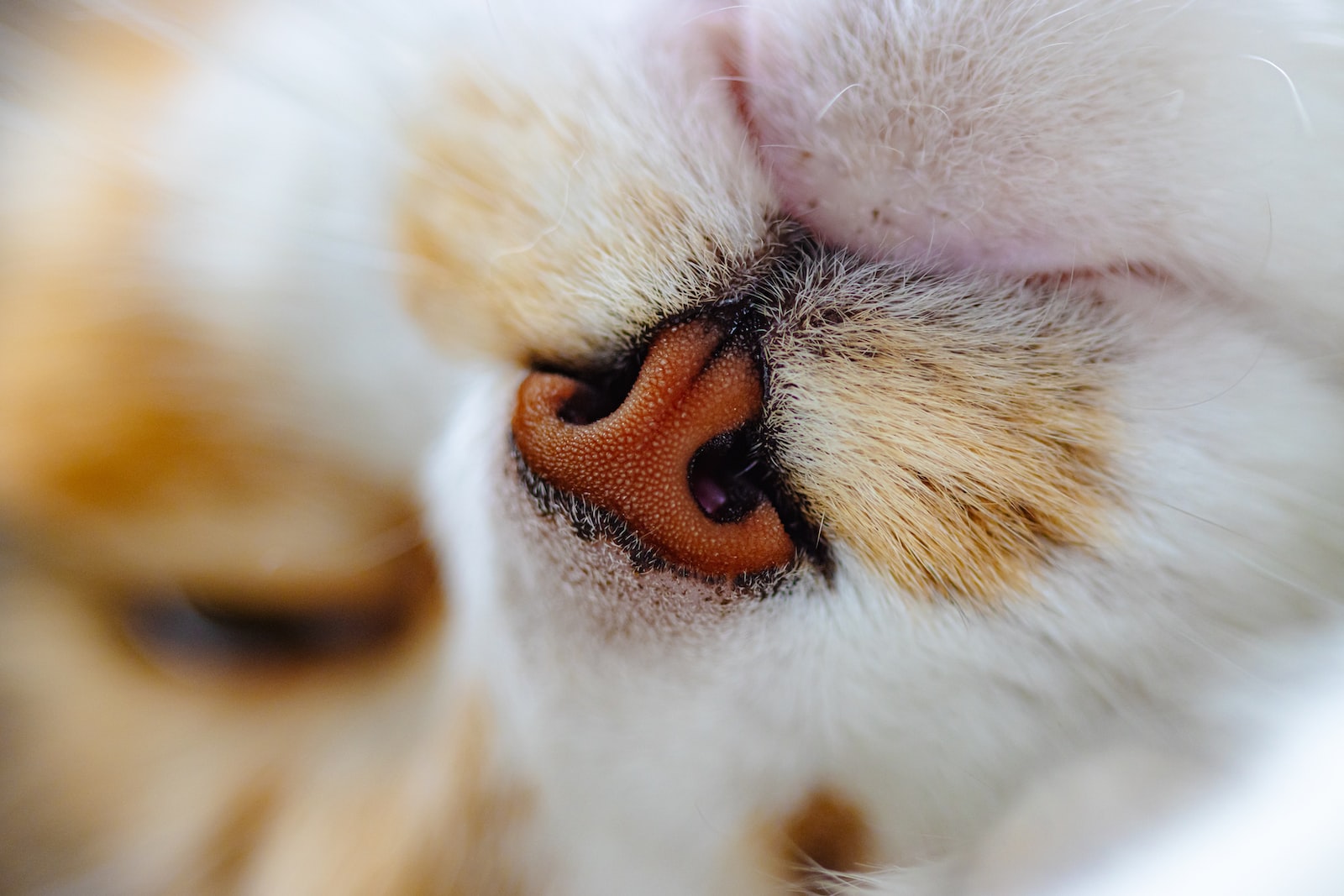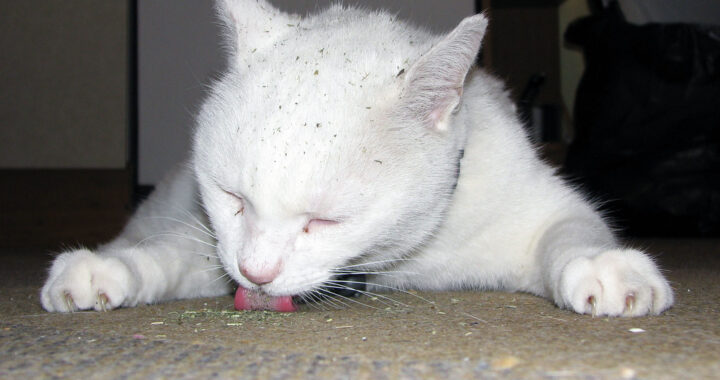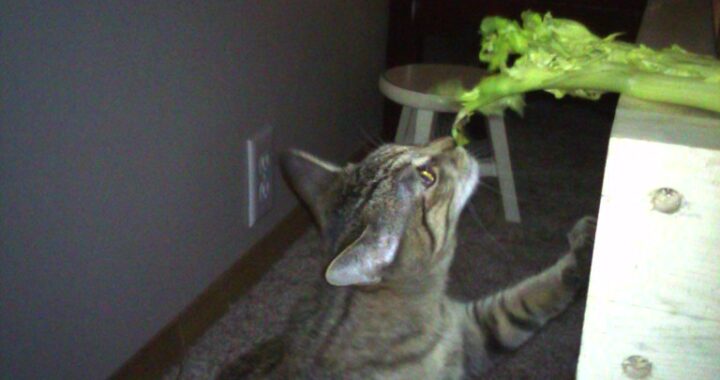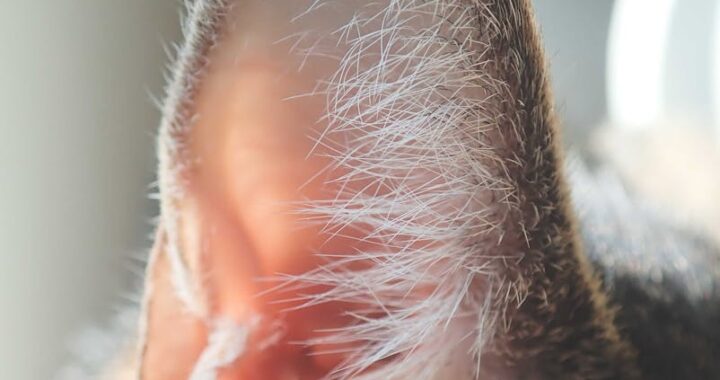
by Nomi Berger
Are you fascinated by the small, heart-shaped “button” in the middle of your favorite feline’s face? Commonly called a nose, it is, in fact, one of a cat’s most uncommonly and intriguing features.
Consider the following:
- Cats have up to 200 million receptors in their noses. Their highly developed sense of smell helps them track prey such as mice, distinguish between toxic food and edible food, dicover the places you’ve been, and find their way home should they wander off and get lost.
- The color of a cat’s nose matches the color of their fur. Cats with pink noses will have white fur; cats with orange noses, like tabbies, will have orange fur; cats with gray noses will have gray fur; cats with black noses will have black fur and black and white fur (tuxedos), and cats with multicolored noses, like calicos, will have multicolored fur.
- Every cat’s noseprint is unique in the same way that every person’s fingerprints are unique. Ridges and bumps on cats’ noses make up their noseprint while the naked skin around their nostrils is known as “nose leather.” Some proud cat owners even go so far as to have their kitty’s noseprint inked!
- Cats’ noses assist in stimulating their appetite (they have fewer taste receptors than either people or dogs). Therefore, when they’re able to smell certain flavors of food — the more aromatic the better — it makes them realize they are, in fact, hungry. This is one of the main reasons for keeping cats on the same diet. Simply recognizing the food’s scent will stimulate their appetite. If, for any reason, you must change your own cat’s food, ensure that you do so gradually.
- Cats’ sensitive noses excel at detecting other cats’ scents, particularly where outdoor cats are concerned. Many outdoor cats mark their “territory” by using their own feces or urine so that if another cat enters it, or worse, urinates there, literally invading their space, one sniff and they know! A male cat’s sense of smell will also alert him to any nearby females in heat. If he’s ready to mate, he releases pheromones that only she can detect informing her of his intentions.
- Cats use their noses as a way of greeting other cats. When two cats meet for the first time, they will approach each other slowly, if not warily, then proceed to sniff one another’s noses, sides and rear ends before, in all likelihood, going their separate ways.
- Since cat noses are so sensitive, very strong odors can not only be distasteful to them but uncomfortable as well. Example: scented cat litter. While pleasant to us, it could be overwhelming for cats. They also dislike the smell of citrus, eucalyptus, lavender, mint and tea tree oil.
- Cats are notorious for licking their noses. And while countless theories abound as to the reason behind this behavior, the most popular ones include the following: to relieve anxiety or stress, to comfort themselves, to “re-set” their sense of smell and, purr-haps the most practical of all, to simply keep their noses clean.







